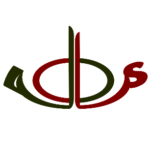Area of Interest: Diverse communication settings
Skills: Reading and Speaking
Competences:
Age Bracket: 11 – 15
Time Commitment: 30 – 60 minutes
Affordability: €
Materials:
Posters produced for activity E10. As an example, we are supplying some of the posters from the Municipality of Miranda do Douro’s advertising campaign for the Festival dos Sabores Mirandeses (gastronomic and handicraft fair) published on the municipality’s social networks between 2015 and 2019.
Students should bring their daily class materials: pencils, pens, notepad, and ideally have access to the Internet, either on computers (one per group) or with personal mobile phones.
Expert recommendations:
As mentioned above, posters (some of them) can be the starting point for approaching some broader cultural content, depending on the level being worked on, the age of the students and the context of the class. Posters can also be used to deepen the lexicon or knowledge about food (for example, posters can be used as an introduction to the Mediterranean diet) or as a starting point for healthy/traditional food.
We repeat that it may not be easy to adapt this activity to other territories where other minority languages are spoken, but many/some of the posters can certainly be adapted, and there will always have to be editing work on the part of the teacher and the students.
This exercise is an extension of exercise E010, with a change in the target audience (here younger students) and some of the objectives. As already mentioned, the posters illustrate a situation of someone famous (easily recognisable to the students), at national or international level, interacting in a situation where they express their desire to visit the town during the Festival. All the dialogues have a humorous component and words related to (in this case traditional Mirandese) food.
- The teacher should select the posters they want to use in the lesson; they should choose those that they think will make it easier to broaden the students’ vocabulary and/or elicit easier interaction from the students, and also those that can help build new posters.
- The teacher divides the class into groups (3/4 students per group) and hands out 3 or 4 posters to each group, explaining the aim of the activity (identify the characters, identify the words – related to food – that they don’t recognise, to later present them to the class and serve as a motto for building other posters). (10′)
- Students identify the characters on the poster (with possible help from the teacher) and list the words they don’t know, especially those related to food; (15′)
- They try to find the meaning of unknown words (ideally online, in a dictionary or corpus) and record it in their notebook; (15′)
- The students present their group’s posters to the rest of the class, explaining the situation and clearing up any vocabulary doubts their classmates may have. (20′)
- [Potential 2nd lesson or homework] (60′)
Depending on the group of students, the teacher can ask them to do some of the work as homework or, if they realise that they don’t have much autonomy and need more support, they can do it in class.
In this case, you will need one computer with an Internet connection per group.
- The students (still in groups) search the Internet for images of famous people in situations that could be used as a poster and construct the dialogues to be used. This is an ambitious task and one that not all students may be prepared for or capable of – it is recommended that the teacher monitors the work closely and has some images prepared that can be used in case the students are unable to do the work. (35′)
- The students present their work to the group, commenting on the situations, the vocabulary and anything else they see fit (25′).

